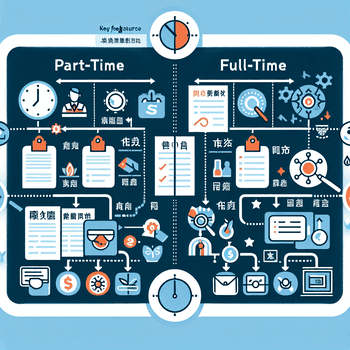
Education is a cornerstone of Chinese society, with a strong emphasis on academic excellence and discipline.
For both expat and local families, choosing between private and public schools in China can be a challenging decision.
Each option offers unique advantages and potential drawbacks, depending on your child’s needs, your budget, and your long-term goals.
This guide provides a detailed comparison of private and public schools in China, covering curriculum, teaching quality, costs, extracurricular activities, and more.
By understanding these differences, you can make an informed decision about your child’s education.
Overview of the Chinese Education System
China’s education system is structured into three main levels:
- Primary School: Grades 1–6 (ages 6–12)
- Junior Secondary School: Grades 7–9 (ages 12–15)
- Senior Secondary School: Grades 10–12 (ages 15–18)
Both public and private schools are available at each level, offering distinct environments and opportunities. For expat families, international private schools are also a popular option.
For more details on the structure of China’s education system, visit the Ministry of Education of the People’s Republic of China.
Curriculum and Teaching Approaches
1. Public Schools
Public schools in China follow the national curriculum prescribed by the Ministry of Education.
This curriculum emphasizes core subjects such as Chinese, mathematics, English, science, history, and physical education.
- Pros:
- Uniform curriculum ensures consistency across the country.
- Strong focus on Chinese language and cultural education.
- Opportunities to participate in national exams and competitions.
- Cons:
- Heavy reliance on rote learning and memorization.
- High student-to-teacher ratios limit personalized attention.
- Less flexibility in teaching methods and curriculum adjustments.
Regional Variations: Public schools in Tier 1 cities like Beijing and Shanghai often have better resources and facilities compared to those in smaller cities or rural areas.
2. Private Schools
Private schools offer more diverse and flexible curricula.
Many international private schools follow globally recognized programs such as the International Baccalaureate (IB), American, British, or other international systems.
Local private schools may integrate the national curriculum with additional subjects like foreign languages or advanced STEM courses.
- Pros:
- Globally recognized curricula prepare students for international opportunities.
- Smaller class sizes allow for more personalized education.
- Innovative teaching methods and technology integration.
- Cons:
- Reduced focus on Chinese language and culture in international schools.
- Higher costs associated with private education.
- Quality can vary significantly between institutions.
Language Options: International private schools often teach in English or offer bilingual programs, making them a better fit for expat families. Local private schools may require proficiency in Chinese.
Teaching Quality and Staff Expertise
1. Public Schools
Teachers in public schools are required to meet strict qualification standards and undergo rigorous training.
The government ensures that teachers are well-prepared in their respective subjects.
- Pros:
- Highly qualified and experienced teachers.
- Strong focus on academic achievement and discipline.
- Stable teaching staff with low turnover rates.
- Cons:
- Limited professional development opportunities.
- Traditional teaching styles may not suit all learning preferences.
2. Private Schools
Private schools, especially international ones, often recruit teachers from abroad who hold qualifications from their home countries.
These schools also tend to invest in ongoing professional development.
- Pros:
- Teachers with diverse educational backgrounds.
- Engaging and innovative teaching methods.
- Continuous professional development opportunities.
- Cons:
- Inconsistent teaching quality across schools.
- Higher turnover rates among expatriate teachers.
Cost of Education
1. Public Schools
Public schools are government-funded, making them a more affordable option.
While there may be fees for extracurricular activities and resources, the overall cost is significantly lower than that of private schools.
- Pros:
- Affordable tuition fees.
- Government subsidies for local students.
- Access to public resources and facilities.
- Cons:
- Limited resources for extracurricular activities and advanced facilities.
- Less investment in innovative teaching tools and technologies.
For Expat Families: Public schools may charge additional fees for non-resident students. Check with local education authorities for specific policies.
2. Private Schools
Private schools can be expensive, with tuition fees varying widely based on the school’s reputation, location, and curriculum.
International private schools often have the highest costs, including fees for uniforms, activities, and resources.
- Pros:
- Access to advanced facilities and resources.
- Extensive range of extracurricular activities.
- Investment in technology and innovative teaching methods.
- Cons:
- High tuition fees and additional expenses.
- Financial burden on families.
Cost Examples:
- Local private schools: ¥30,000–¥100,000 per year.
- International private schools: ¥100,000–¥300,000+ per year.
For more information on costs, see this guide to international school fees in China.
Extracurricular Activities and Facilities
1. Public Schools
Public schools offer extracurricular activities such as sports, music, art, and academic clubs.
However, the variety and quality depend on the school’s funding and resources.
- Pros:
- Opportunities for national competition participation.
- Emphasis on physical education and sports.
- Availability of cultural and academic clubs.
- Cons:
- Limited resources for a wide range of activities.
- Less variety compared to private schools.
2. Private Schools
Private schools typically provide a broader array of extracurricular activities, with facilities such as swimming pools, sports fields, music studios, and science labs.
International private schools may offer unique programs like Model United Nations, robotics clubs, and international trips.
- Pros:
- Diverse and extensive extracurricular programs.
- Access to advanced facilities and resources.
- Opportunities for international exposure and cultural exchange.
- Cons:
- Higher costs associated with activities and facilities.
- Pressure to excel in multiple areas.
Admission Processes
Public Schools:
- Local students: Admission is based on residency and household registration (hukou).
- Expat students: Some public schools accept expat children, but additional fees and proficiency in Chinese may be required.
Private Schools:
- Admission often involves entrance exams, interviews, and submission of academic records.
- International private schools may require English proficiency tests for non-native speakers.
Conclusion
Choosing between private and public schools in China depends on your child’s needs, your budget, and your long-term goals.
Public schools offer affordable education with a strong emphasis on Chinese language and culture, while private schools provide diverse curricula, smaller class sizes, and extensive extracurricular opportunities.
For expat families, international private schools are often the best option due to their bilingual or English-only programs and global recognition.
However, public schools can be a viable choice for those seeking cultural immersion and affordability.
By understanding the differences and considering your child’s unique needs, you can make an informed decision that supports their educational journey.
For more resources, visit:



